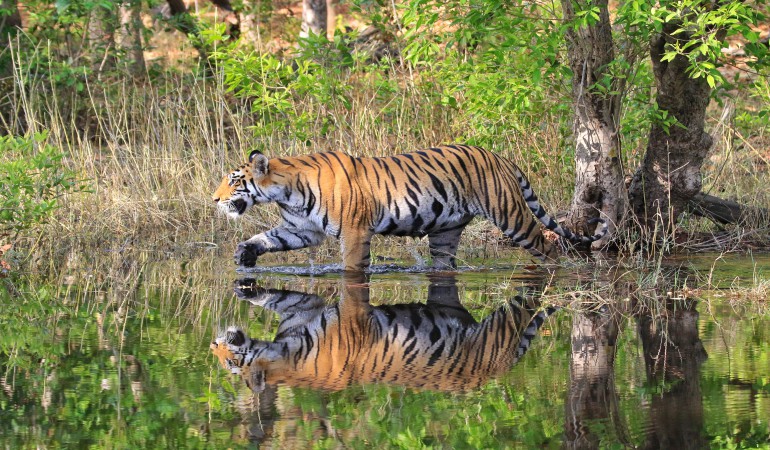Blog Details
- Home
- Blog Details
- Super User
- on 4 years ago
- 0
- 5782
How it helps humans when we save Tigers?

Tigers are one of the world’s most famed animal. Tigers can be traced way back into history of many cultures through out Asia as well as in other parts of the world they can be seen as one of the most prominent parts of logos and brand images. Thus it won’t be an exaggeration to say they Tigers are omnipresent be it the History or the modern human culture. The fascination for Tigers in human is deeply ingrained since time immemorial . It is worshipped as a deity at various places ranging from snowy Russia to Jungle of South East Asia. However it is widely believed that in reality their actual existence in the wild in the current scenarios has been reduced to only parts of their historical range. Wild Tigers are now found in just 10 countries across the world and their historical range is believed to have shrunk well above 90% of its original in just one century.
It is obvious that many might question the need to put in so much of money and resources to save Tigers who have already lost about 90~95 % of their territory. The huge devastation seems to make the importance of saving Tigers a low priority. Here are few reasons why saving Tigers now is very important than ever before.
Tiger = Jungles = Water
Tiger habitats in India are very important for their role as watersheds. Lot of rivers originate from these habitats as well as these habitats help in maintaining supply of water to perennial rivers. Thus while protecting these forests we also protect our source of water and in addition these forests can help the humans in evading the impacts of climate change. Protected Areas of India are well known for their biodiversity and their protections ultimately leads to conservations of each and every species living in those forests. In India there are 51 Tiger Reserves (source : https://ntca.gov.in/tiger-reserves/#tiger-reserves-2 – List of Tiger Reserves) currently and all these reserves are also home to numerous other species of flora and fauna both in addition to the iconic cat.
For example it is estimated that more than 30% of Asian elephant populations live within tiger landscapes which implies that protecting these habitats helps in conservation of elephants, too. The forests where tigers thrive, we can see numerous diverse plants and animals thriving too. When we save wild tigers, we can help save many other species.
Tiger which plays a critical role in the health and diversity of an ecosystem. It is a top predator which is at the apex of the food chain and keeps the population of wild ungulates in check, thereby maintaining the balance between prey herbivores and the vegetation upon which they feed. Therefore, the thriving population of tigers in the forest is an indicator of the well being of the entire ecosystem. The extinction of this big cat indicates that the ecosystem is not sufficiently protected, and neither would it exist for long thereafter. It is widely believed that if the Tiger go extinct from an eco-system then the probability of that entire eco-system collapsing will be very high. Thus it’s not just about saving this truly amazing animal. It is also about making sure that the earth remains inhabitable for humans as protecting Tigers means protecting the forests which are known to provide ecological services like clean air, water, pollination, medicinal plants, temperature regulation etc ultimately beneficial for humans. Protecting forest landscapes for tigers will help save the last remaining forests critical for the survival of wildlife and people, and regulating global climate.
In addition to benefits to humas which come from the ecological services provided by the forests which we conserve in order to save these magnificent cats, theTiger also directly affects the local economy in the form of tourism. Tiger are major wildlife attractions and lot of tourists flock to various areas just to catch a glimpse of them, which in-turn provide incomes for local communities.
Thus its quite obvious that we as humans are greatly benefitted when we save Tigers and their aesthetic, ethical and cultural value have proved to be critical factors for our society. These factors are largely responsible for the success of tiger conservation in India. Tigers are a global phenomenon, an vital force of nature and we all have to make their conservation successful, otherwise they will only be known in zoos or in cultural media. A world without tigers would be economically and spiritually a much poorer place.
Related Images
Become A Volunteer

 Twitter
Twitter

